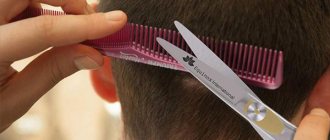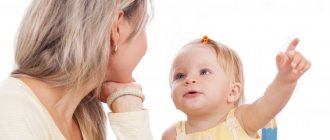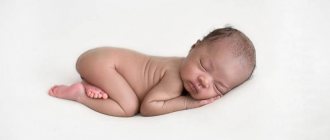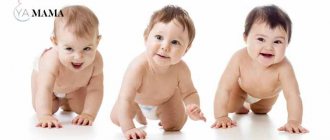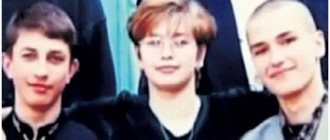Why can’t you cut your baby’s hair in the first year of life? One of the arguments here is folk signs. They say that if you cut a baby's hair before he is one year old, it can lead to many problems:
- The child will speak poorly, this will “cut out” his tongue.
- In this way, the child’s future wealth and well-being are cut off, and he will have to live in poverty all his life.
- Some believe that a baby’s first hairs contain special energy. Cutting them off can ruin your baby's entire life. His path will be filled with troubles and failures. Is it possible to cut hair for children under one year old? Our ancestors would have answered unequivocally - no. For them, the baby's first haircut was associated with special rituals. This was intended to help the child in the future and make his life easier. During the haircut, only one lock of hair was cut off. The tonsure procedure was purely symbolic.
The event was scheduled for the baby's first anniversary. The child was sat on a skin in the middle of the house. An obligatory guest was the midwife, who helped the baby to be born. Another day when you could cut your baby’s hair was Maundy Thursday before Easter.
These first curls were considered the strongest amulet and were kept by the mother. Before leaving for the army, another strand of the guy’s hair was cut off and sewn together with the baby’s hair into the clothes of the future soldier. This was supposed to be protection from injury.
Signs and superstitions
Our distant ancestors believed that all the spiritual power of a person is concentrated in hair, and cutting it means deliberately depriving oneself of health and shortening one’s life. In some nations, it is strictly forbidden to cut a child's hair before reaching the age of 7, and if a member of the royal family shortens his curls, this means abdication of the throne. Cutting off a baby’s curls means dooming him to a hard life and want.
The rejection of pagan beliefs changed little. In Orthodoxy there are also several restrictions regarding hairstyles. Even in the Old Testament there is a reference to how Delilah, who betrayed her husband Samson, deprived him of his strength by cutting off the long braid that made him invincible. And the baby’s first lock of hair is cut off at baptism, tied with a ribbon and kept in the house.
Particular attention should be paid to the fact that on a number of church holidays, neither children nor adults can have their hair cut. A ban is imposed primarily on such procedures planned for Good Friday. On Maundy Thursday, contrary to popular belief, haircuts are not prohibited.
But Muslims took a simpler approach to cutting the hair of small children. In Islam, the first haircut is a significant event, celebrated on a grand scale.
The era when superstitions ruled the minds of people is far in the past. But why is it impossible to cut hair for babies who have not celebrated their first birthday, in our time of advanced technology and freedom from prejudice? To get the answer, you need to turn to medical research.
Haircut for babies: pros and cons
Modern mothers still believe that if you cut your child’s hair at one year old, the growing hair will be thick and silky. This statement is fundamentally incorrect; moreover, after this procedure an allergic reaction may occur. Research shows that hair thickness depends on genetic predisposition, and external factors such as haircuts have little effect on it. And when it is possible to cut the baby’s hair, each parent must decide for himself.
But there are other reasons why you should refrain from cutting babies' hair:
- there is a high probability of injury in the area of the fontanel that has not yet healed;
- when cutting with a clipper, you can damage the hair follicles, which will lead to uneven hair growth;
- we cannot exclude the possibility that the scalp will be damaged during this process, which will at least lead to the formation of a scar;
- The psyche of a baby who is less than one year old is unstable, and an unusual procedure can shake it, which can lead to hysterics, nervous disorders and anxiety during sleep.
Dr. Komarovsky’s opinion on this matter is clear: the length of the hairline is shortened as it grows, no matter what age the person is. If a mother is afraid to do her baby’s hair on her own, then she should use the services of a hairdresser. There are now many hairdressers open that specialize in children's haircuts.
It is especially necessary to ensure that hair does not get into the baby’s eyes. In infancy, the formation of all body systems, including the visual, occurs. And curls covering your eyes can ruin your vision. It is necessary to cut bangs as they grow.

When asked how to properly cut a baby’s hair who has not crossed the first annual milestone, pediatricians answer that the approach to each baby is different:
- if there is practically no hair, there is no need to take the child to the hairdresser when he is one year old;
- If your baby's thick curls have grown quite a lot, then you shouldn't wait until your first birthday to make an appointment with a hairdresser.
Often, mothers, in order not to cut off the beautiful curls of toddlers (especially little girls), tie their ponytails from a very early age. This procedure can have a detrimental effect on the condition of the scalp and hair, since the baby’s thin hair, under the influence of hairpins and elastic bands, becomes particularly fragile and brittle. Until the age of four, it is better for boys and girls to wear short hair.
Parents, when deciding whether to go to the hairdresser with their beloved child, should first of all take a closer look at the child himself. If he is comfortable with a long haircut, then there is no need to torture the baby and force him to go through a procedure that will make him nervous.
Why is it undesirable to cut a child’s hair before one year of age?
It is known that there are certain stages in the growth and development of a child. Our ancestors knew very well that at a certain age not only physical but also mental maturation occurs.
From a very early age, the Slavs raised a child to belong to his gender, and this was reinforced by certain rites, which were called “Age Initiations”: Haircut, Lightning and Braiding for girls, and Haircut, Mounting on a horse and Belting for boys. They occurred at 1 year, 3-5 years, 7-12 years, depending on the child’s readiness.
The modern science of developmental psychology claims that it is during these periods that children experience age-related crises, due to which their perception of the world, their place in it, and relationships with people change.
When and how can you cut your child’s hair for the first time?
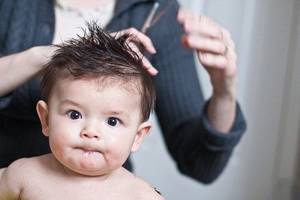
Then the baby will begin to grow thick and beautiful hair. When deciding whether to cut your child's hair bald every year, it is worth considering that this will not make the hair thicker and more beautiful, and it will not grow better. This is confirmed from a scientific point of view. The number of hair follicles, the rate of hair growth, their color and type are formed in the baby when he is still in the womb. If both parents had thick hair, their child will have it too.
OPINIONS OF PEOPLE WHO ARE NOT ADOPERS OF CHILDREN'S HAIRCUT
- I don't see the point in cutting a child's hair. After all, whether your hair grows thick or thin is determined at the genetic level. Expecting that after a haircut your hair will become incredibly beautiful and strong is stupid.
- It is incredibly difficult for very young children to sit still in one place. It will be very difficult for the hairdresser to do his job.
- Cutting a child's hair bald at 1 year old can be fraught with negative consequences. After cutting, the hair will grow back prickly, which can cause discomfort for the baby.
- In winter, the baby's head will freeze without hair.
- Using a hair clipper or scissors, there is a high probability of injuring the scalp. As a result, any infection can enter through the blood, which is unacceptable for the baby.
Let's sum up people with different opinions. As you noticed, the arguments “against” are more convincing than those of people who are “for” cutting a one-year-old child’s haircut. For those who still want to cut their child's hair a year, we recommend following some rules.
Is it possible to cut a child's hair under one year old?
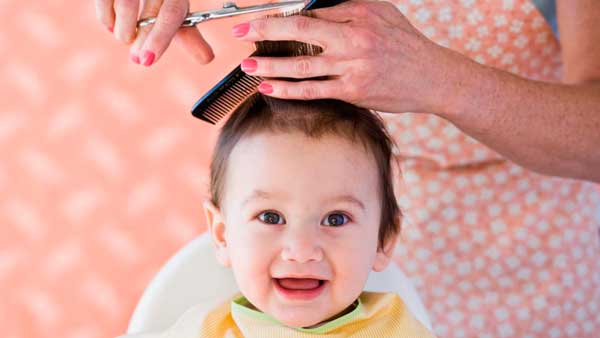
Caring for a baby poses many questions for young parents. Grandmothers and aunties do their best to discourage babies from cutting even their bangs. And upon reaching the age of one, they insist on a ritual shaving of the head, which supposedly can provide the child with luxurious hair in the future. Should you follow such advice? Do they have a scientific basis? Is it necessary and possible to cut a child’s hair under one year of age? Below you will find answers to these and other questions.
Is it worth cutting a child's hair a year?
With signs, it is allowed to cut a toddler's hair after he turns one year old. Whether parents use this method depends on the baby’s hair type, gender, and reaction to the procedure. You can cut your child’s hair a year or earlier for the following “bonuses”:
- A new hairstyle will highlight gender differences. Important for those parents who are nervous when their boys are mistaken for girls, or vice versa.
- Cropped strands do not get into the eyes and require less care than long hair.
- In the heat, the head sweats less, there is no such discomfort as with long hair.
- If you have problems with the scalp, the exfoliated crusts will not get tangled in the hair.
- During play, there is a risk of causing pain by accidentally tugging on the strands. This can be done by those with hair themselves, as well as by other children. A short hairstyle will save you from unnecessary hassle.
At the same time, not all children agree to tolerate peacefully when parents or a hairdresser works on their image. If the sight of hairdressing scissors drives your baby into hysterics, and the existing fluff does not cause him any discomfort, it makes sense to abandon the idea of cutting his hair until he is a year old.
Is it possible to cut a child's hair under one year old? Traditions and beliefs
According to Slavic beliefs, hair contains strong energy, which inevitably weakens after cutting. Perhaps that is why our forefathers wore long hair, regardless of gender and age. Representatives of many nationalities did not cut their girls’ hair from birth until marriage. And the ban on shortening boys' hair usually applied only to the most vulnerable period of their lives.
Due to difficult living conditions and lack of medical care, children often died in infancy. It was believed that during the first year the soul “looks closely” at the family and, if it doesn’t like it, can leave it. To avoid grief in the event of death, mothers were instructed not to become too attached to their children during this period. The tonsure of a one-year-old child symbolized his unity with his family.
History of the rite of tonsure
The history of this ritual dates back to pre-Christian Rus'. At that time, not every child lived to see one year old. It was believed that before the age of one year, the child decides whether to stay in the family or leave. And if the child survived, it meant that he decided that this family was suitable for him and remained with his relatives.
On the first day of his name day, the first lock of hair was cut off, but the rest were left untouched. This was done as a sign that the baby had been accepted into the family and was now under family protection.
The first lock of hair was kept in a canvas bag behind the icons until adulthood, and then it was given to the owner, and it served him as a talisman against troubles and illnesses.
This ritual did not exist in all regions. In some regions, the ritual was performed every year, in others they did not cut their hair until they were 3.5 or even 7 years old, and in some only boys had their hair cut.
Haircut or head shave: which is preferable?
In ancient Slavic culture, there was no shaving of children's heads. On the contrary, children and adults wore long hair. Forced shaving was used as a punishment for serious offenses, as it was considered extremely humiliating. In addition, in ancient times there was no tool that allowed you to shave your head safely and painlessly.
The emergence of the tradition of shaving boys' heads dates back to the times of the Cossacks. Starting from the 18th century, a shaved head became an integral attribute of the army. During the times of forced recruitment, “shave” meant “to be recruited as a soldier.” Later, the tradition of head shaving spread to children, of course, exclusively males. But even then the question of whether it was necessary to cut a child’s hair bald every year did not arise. The procedure was carried out much later, already at a conscious age.
In troubled times, this tradition migrated from military families to civilian ones. The reasons are prosaic. During wars, pestilences, and epidemics, people suffered from lice and lice. Insects suffered from many diseases. Shaving the head made it possible to simplify hygiene procedures and to some extent protect children. The conclusion seems obvious: in the modern world of household goods, there can be no talk about the need for shaving.
What will the grandmothers say?
When people in the older age group find out that a girl is pregnant, they immediately begin to give her various advice from the field of omens. One of them is to never cut or dye your hair, because this can harm the baby. The same can be heard about the child himself. Grandmothers will categorically answer negatively to the question of whether it is necessary to cut a child’s hair every year. And all because, as legend says, a baby’s mind can be cut off. Who will believe this? But here the heavy artillery comes into play - stories about neighbors and acquaintances who made a huge mistake - they tonsured a child in the first year of life, and nothing good grew out of that child. This is where any mother has to think.
Debunking myths
Myth one. A “zero” haircut can affect the growth rate and thickness of hair.
Hair follicles (including those on the head) are formed in utero. There is no way to increase their number by shaving or cutting, head massage, sun or air baths. But it is very easy to damage existing hair follicles. The fact is that in babies, the hair follicles are very close to the surface of the skin, and the skin itself is thin. Shaving, cutting your hair like an adult, and even excessively vigorous combing can damage the hair follicles and lead to skin irritation.
Myth two. If the baby's down is not cut off, the child will be left with thin, sparse hair for the rest of his life.
Such a judgment has no basis. Every child is born with vellus hair, formed in utero. His “hairstyle” at birth can vary from a noticeable “hedgehog” to thick curls. In the period from three months to one and a half years, the vellus falls out and is erased. “real” hair replaces fluff without any additional effort on the part of the parents. A final assessment of the color, structure and thickness of a child’s hair is possible only after reaching 14-15 years of age. During puberty, hair will look the same as it does in adulthood.
Myth 3. If you cut your baby's hair to zero per year, his hair will immediately become stronger, thicker and healthier.
The baby's locks grow unevenly. That is why, after shaving or cutting, the child’s head looks neater and the hair becomes thicker. In reality, the effect is achieved due to the fact that the hair has become shorter and has the same length.
Why cut the hair of a one-year-old child? Every parent knows the tradition: every year it is necessary to cut the child's head. If careless dad and mom don’t think about it, there will definitely be relatives or friends who will remind you of the importance of the first haircut. Many people are convinced that a baby's thin, soft hair becomes thick and coarse only after shaving.
Any pediatrician can say that this is a deep misconception, and the idea of cutting a child’s hair at the age of one is a relic of the past. The baby's first hair is really soft and sparse, however, it gradually falls out and is replaced by thicker and coarser hair. Haircut speeds up this process, but does not affect the quality of the hair. Hair growth and thickness primarily depend on the child’s health and heredity.
The tradition of cutting one's hair every year has deep historical and cultural roots. It originated in Rus' before the adoption of Christianity. High infant mortality turned a child's life into a constant struggle for survival. Every year, life became another victory for the baby. It was believed that before the child was one year old, it was determined whether he liked his family. If he lived with the family for the first year and remained alive, then the family was suitable. From that moment on, the child became a full member of the clan, and tonsure symbolized the transition to a new stage of life. Depending on the area, such a ritual could be carried out every year, three, five or seven years. Often, only boys were tonsured, then they were put on a horse and given an ax or blade in their hands. For girls, weaving their first braids became a symbolic transition to a new level.
With the adoption of Christianity, the ritual of tonsure of infants did not disappear. Parents invited relatives, godparents and a midwife. The baby was seated on a sheep's skin, and the godfather ceremonially cut the baby's hair in the shape of a cross. The curls were carefully tied with a red ribbon or thread and stored under the icons. In the families of high-born princes, boyars and nobles, the tradition was somewhat modified: only boys of three years old had their hair cut. To do this, the godfather brought his godson to church, where the boy's hair was cut in a cross shape. Such a significant event was necessarily celebrated with a feast.
Traditionally, children had their hair cut, not shaved. Shaving your head is a hygienic necessity. It appeared during the war and post-war years to prevent the spread of head lice and various infectious diseases carried by lice. At a certain point, ritual haircuts and preventative shaving were combined, and one-year-old children began to be shaved.
whether or not to cut their child’s hair ; you should not shave your baby’s head to appease friends and relatives. This is not a bad tradition; if it is acceptable to the child’s family, then the soft curls can become a wonderful heirloom, a memory for the child in the future.
Early tonsure: the pros and cons
- Pointlessness. Why do children get their hair cut every year? None of the external measures can affect the formation of the bulb located in the hair follicle under the skin.
- Riskiness. Shaving is an extremely dangerous procedure. Modern hair clippers are designed for adult hair, which is fundamentally different in thickness and structure from baby hair. They don't so much cut off children's hair as they pull them out. When cutting a fidget with scissors, there is a chance that an awkward movement of the hand will pull out the developing follicles and, thereby, slow down hair growth.
- Stress. Small children do not like to have their hair cut. Some psychologists believe that before the age of one and a half years, children see themselves as a single indivisible whole. Forced haircuts cause them panic. In an unformed consciousness, it is equivalent to the loss of a limb. However, this is debatable. If the problem exists, it will still have to be resolved as part of the nail trimming procedure.
- Inconvenience. Cutting your hair to zero leads to the formation of stubble, which in turn leads to irritation. A bald head itself can cause discomfort. Without a hair cap, a child is simply cold.
- Possibility of infection. No matter how careful a mother or hairdresser is, there is always a chance of scratching the delicate scalp of a fidget. The entry of pathogenic bacteria into the wound can potentially lead to inflammation.
- The deception of positive results. The effect of hair thickness after cutting is achieved due to the order on the head and the fact that all the hair is the same length.
Haircut: arguments for
- Hairstyle is a gender factor. A haircut allows you to clearly recognize who appears before society, a boy or a girl. Psychologists have not come to a consensus on at what age a child becomes aware of his gender. But if passers-by often mistake a boy for a girl, something needs to be done about it. And a haircut is the best way out. Especially for families planning several children and preferring unisex things and clothes (a gray stroller, a light green suit).
- Hair should not interfere with growth and development.
- Some babies are born with thick vellus hair. Due to the grasping reflex, they pull their own hair. The child screams in pain, but does not stop pulling because he does not understand what is happening to him.
- It is quite obvious that long curls float in the hot summer, make the scalp sweat excessively, stick to the neck, tickle and irritate. Of course, for a girl, excess curls can be pulled up and pinned with a hairpin. But if this happens to a boy, it is stupid to use hairpins. At the same time, there is no point in putting up with discomfort until the age of one.
- Separately about bangs. A child's vision is just developing. It is unacceptable for hair to get into your eyes and block your view. Long bangs should either be pulled up with a hair clip (girl) or cut off (boy).
- A neat look. Well-groomed hair suits everyone, regardless of age and gender. Since in a small child it is thin and sparse, hairdressing techniques on it are hardly noticeable. It is enough for the mother to trim the hair to the same length. And the child will immediately be transformed.
- Many children develop baby crusts on their scalp that have to be peeled off. To make the scales less likely to get stuck in the hair, it is better to cut your child’s hair short.
Is it possible to cut hair for children under one year old?
Caring for a child is traditionally surrounded by many prejudices and superstitions that we have inherited from earlier times: whether to show the baby to strangers until one month old, whether to “help” walk confidently by cutting the invisible bonds in front of the legs with scissors, etc. With such an abundance of signs, it is not surprising that many mothers are interested in whether it is possible to cut a child’s hair under one year old.
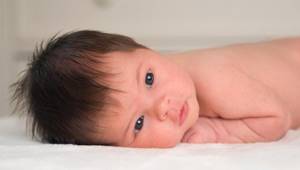
Modern grandmothers (and most often they are the ones who do not advise cutting a child’s hair until he is one year old) are guided by ancient ideas about hair as a kind of source and repository of vitality.
It is worth noting that such beliefs are characteristic of many cultures - from ancient to medieval Japanese. Over time, various prejudices were superimposed on signs and pagan ideas. It is believed, for example, that if parents decide to cut their child’s hair before he is one year old, the color of his hair may change (darken or lighten).
Should I shave my head?
Some parents and representatives of the older generation have the opinion that it is impossible to cut a child’s hair until he is one year old, and then he must shave his head. This opinion confuses the ancient traditions of the Russian people with their incorrect interpretation. The fact is that previously in Rus', children who turned one year old did not have their hair cut completely, much less shaved. They cut off a lock of hair, wrapped it in a rag and kept it behind the icons. This was done to protect against evil spirits and misfortune. Such a lock of hair was returned to the young man when he went into the army, and to the girl when she got married. This was done for good luck in a new life and salvation from troubles.
Today, hardly anyone follows this ancient tradition of preserving babies' hair. It rather takes a different turn when parents are sure that it is possible to cut a child’s hair only at the age of one and that it is best to completely deprive him of his hair. Supposedly this will help your hair become strong and thick. In reality, nothing like this happens. The structure of a child's hair cannot be changed by completely removing it from the head. Perhaps the remainder of the baby fuzz will be removed and normal hair will actually begin to grow. But it is still better for this process to occur gradually, in a natural way for the child. In addition, the hair clipper can frighten and injure the baby, and the haircut itself will deprive his head of the much-needed protection from cold and damage.
Therefore, you can cut a child’s hair at any age, but this should be done carefully so as not to harm the baby or spoil his beauty.
Grooming and trimming of infants
Grooming a child most often involves radical hair removal. If we discard all superstitions and do not pay attention to signs, this procedure cannot be recommended for children under one year old. Why?
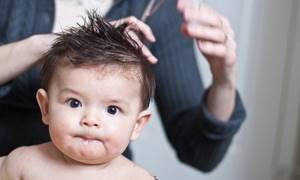
The fact is that if you do it carelessly (regardless of whether you are going to cut with scissors or a clipper), you can damage:
- unhealed fontanel;
- hair follicles, which will cause hair thinning;
- scalp (at the site of the scar, hair may not grow later);
- the child’s psyche (since a haircut is an unfamiliar and often frightening procedure for him).
In relation to children under one year old, we can talk not about a haircut, but about a haircut - a simple shortening of the hair. Pediatricians advise parents to cut their child's hair in several cases:
- during hot summer;
- if long curls bother the baby (they cover the eyes and ears);
- for certain diseases (for example, pediculosis).
Individual characteristics
Already in the maternity hospital, children differ from each other in the presence, thickness and length of hair. For some it is light fluff, for others it is a head of hair that some adults may envy.
However, the condition of the first hairs (which, as experienced mothers know, fade over time) cannot be judged about the child’s hair in general. Brunettes can become blondes, and it is quite possible that babies with sparse hair will have a luxurious head of hair.
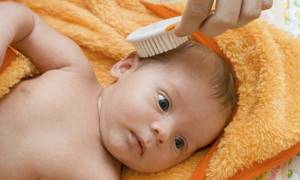
If a girl grows up in the family, scissors are discussed only when the bangs need trimming. To prevent long strands from disturbing their little ones, mothers use cute accessories that can easily be found in any children's store: hairpins, elastic bands, headbands, headbands, etc.
Rules for caring for the hair of a child up to one year old
Regardless of whether parents decide to cut their child's hair before he turns one, the rules for caring for children's hair should be followed.
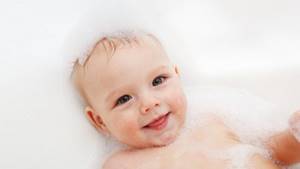
- A child under one year old should wash his hair every day, but it is better to use baby shampoo once a week. In this case, the product must be hypoallergenic, without parabens and sodium lauryl sulfate in the composition. Rub the shampoo in your palms until foam forms and gently apply it to the baby’s hair, gently massaging the scalp.
- After washing, the hair is not dried, but blotted with a towel. Hair dryers should not be used on infants!
- For combing, use a brush with soft natural bristles.
- If seborrheic crusts appear, you can apply vegetable oil to the scalp an hour before bathing. Softened crusts are removed with a brush. If this method does not help well, and crusts appear again and again, you should contact your pediatrician to prescribe drug therapy (as a rule, these are antifungal drugs in the form of medicated shampoos, creams and ointments).
Thus, it is better for parents to decide on a haircut for up to a year, guided by common sense and the characteristics of their child, and not by signs, belief in which is currently unbecoming even for people of the older generation.
Origins of the tradition
Our ancestors had many beliefs related to hair. The rite of tonsure itself played a big role in a person’s life and became a symbolic sign of transition to another level. Thus, it was believed that it was necessary to cut a one-year-old baby’s hair in order to drive away evil forces from him and erase the memory of birth pain.
Since ancient times, thick hair has also been perceived as a sign of wealth. That is why a lot of attention was paid to hair (especially children’s hair): they combed it with coins instead of a comb, and rolled chicken eggs over it. The cut strands could not simply be thrown away. They were burned or buried, hidden behind a fence with certain verbal formulas.
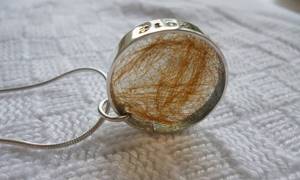
The custom of preserving a child's first lock of hair, which is still alive in most families, is also associated with the belief that hair carries life force. Often this strand, left as a souvenir, is cut off by the baby’s godfather. There are many superstitions surrounding the process of cutting a one-year-old child's hair. So, it is necessary to cut a child’s hair on a clear afternoon, and it is advisable to bury, burn or float the cut hairs.
READ ALSO: How to cut your child's hair at home - rules and recommendations
However, modern mothers and fathers live in an information society, which means that they should listen not so much to signs passed down from generation to generation, but to data verified by science.
